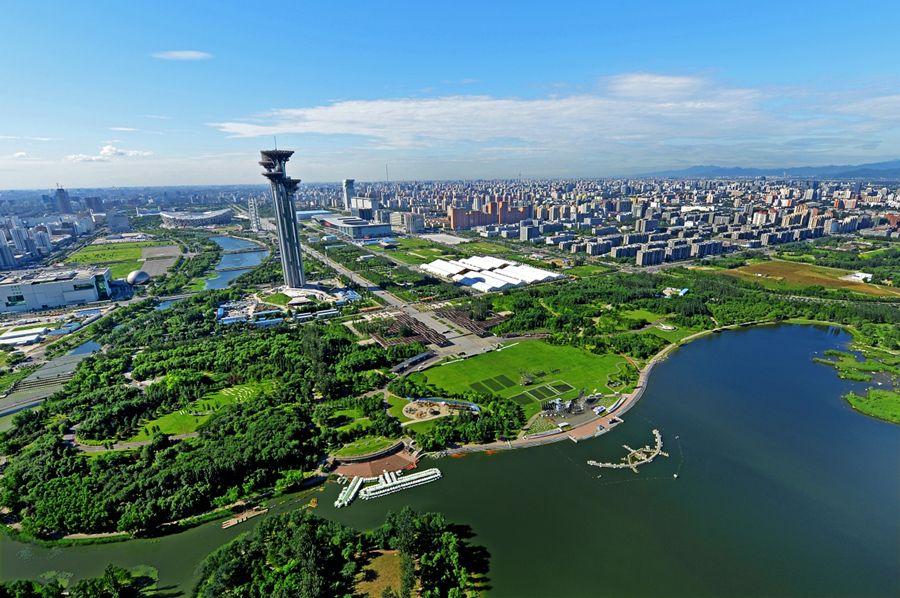BEIJING, April 30 (Xinhua) -- While skies are clearer during the epidemic amid subdued human activities, China is determined to keep the tint of blue on the dome as it propels economic recovery while paving the way for long-term growth.
The limited and temporary impact from the epidemic won't affect China's long-term momentum toward improving the ecological environment, said Cheng Huiqiang, deputy secretary-general of the China Development Research Foundation.
The country is making steady progress in tackling the challenges posed by the COVID-19 epidemic, including medical waste disposal, pushing ahead with environmental undertakings in action.
As of April 25, China had disposed of 304,000 tonnes of medical waste since Jan. 20, with daily treatment capacity up 1,220 tonnes from before the epidemic, official data showed.
The Ministry of Ecology and Environment (MEE) said Monday it is yet to discover evidence that the epidemic is affecting the quality of drinking water so far.
A draft revision to the law on the prevention and control of environmental pollution by solid waste was adopted by the National People's Congress Standing Committee Wednesday, introducing higher standards for medical waste treatment, especially during epidemics. It will take effect on Sept. 1.
The country has vowed to install in every county a medical waste disposal system complete with facilities for collection, transport and treatment by June 2022. It is estimated that the treatment of medical waste will become an industry of 11 billion yuan (about 1.56 billion U.S. dollars) by 2023, drawing investment from many A-share listed firms.
Bent upon economic recovery as the epidemic wanes, the world's second-largest economy strove to orient its policy towards green growth in the long run.
China will continue to step up environmental protection while pursuing high-quality economic growth, said Cao Liping, an official with the MEE.
The country placed environmental protection projects high on its agenda of work and production resumption. The MEE has urged local governments to actively resume 114 major ecological projects.
With a total investment of 252 billion yuan, these projects cover water treatment, ecological restoration and industrial park construction and were selected to boost investment, promote economic growth and meet people's demand.
Among these projects was the ecological restoration of Erhai, one of the largest plateau lakes in southwest China's Yunnan Province. The project, with an investment of over 27 billion yuan, has been re-started and reported steady progress despite the epidemic.
Apart from supporting major environmental projects, China also resorted to environmental economic policy to steer businesses toward sustainable growth, unveiling a plan in December to establish a national green development fund in 2020.
The country's green finance, an emerging environmental economic policy tool, has seen rapid expansion in recent years. In 2019, its green bond issuance topped 30 billion U.S. dollars, ranking second in the world, data from Bloomberg showed.
With new forms of green finance springing up, the country has expanded financing channels for environmental projects, slashed financing costs and reduced project risks, spurring a shift to green growth, the People's Bank of China said in a report.
Wang Yao, a professor with the Central University of Finance and Economics, attributed green growth in some regions to the country's sound green finance system, but also noted that efforts need to be made to unify green finance standards, regulate environment information disclosure and roll out more innovative products to achieve high-quality development. Enditem




 A single purchase
A single purchase









